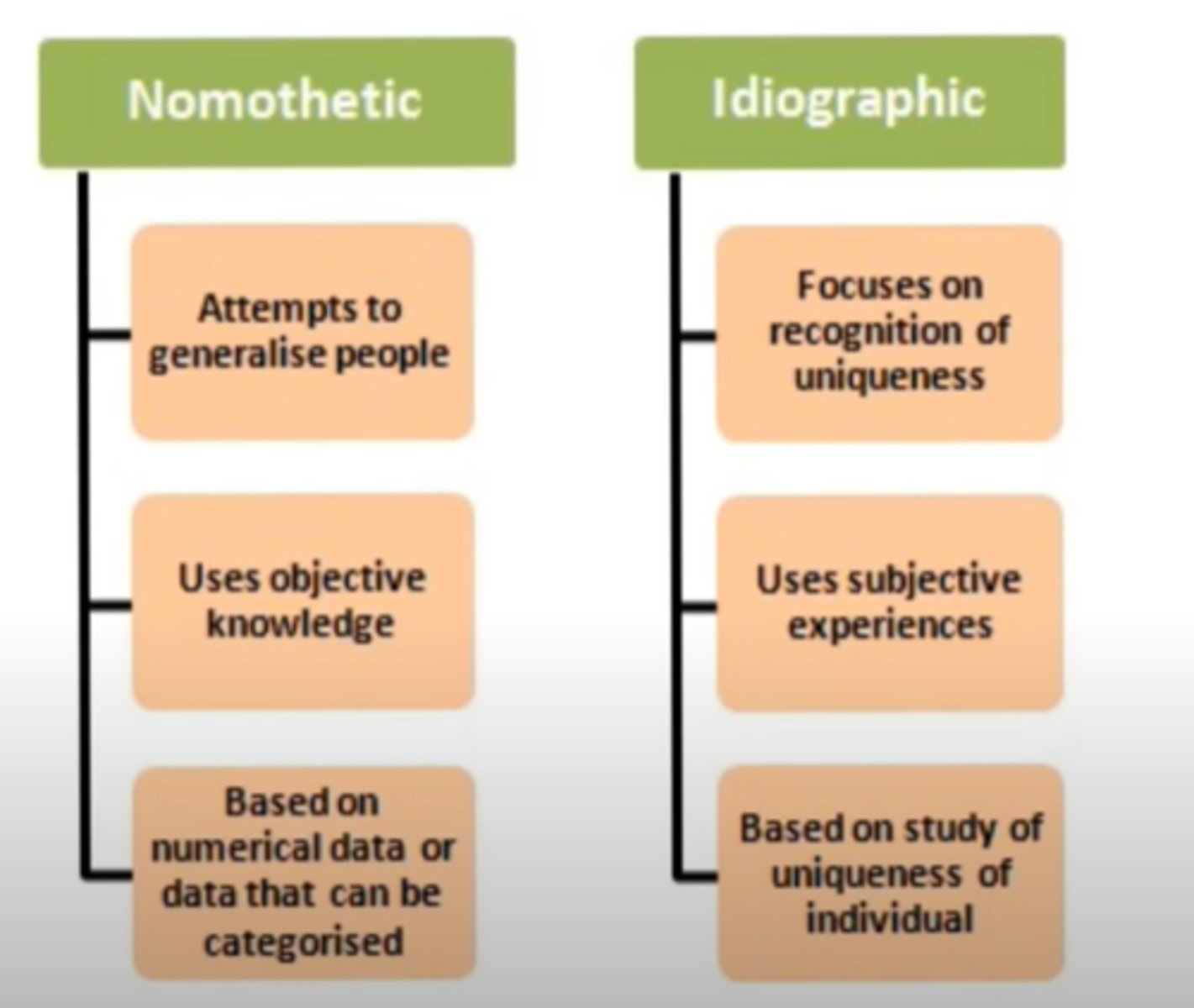I&D 07: Idiographic & nomothetic (a) A01
1/4
There's no tags or description
Looks like no tags are added yet.
Name | Mastery | Learn | Test | Matching | Spaced |
|---|
No study sessions yet.
5 Terms
Explain the types of universal laws of behaviour the nomothetic approach tries to establish, using appropriate examples to illustrate. (2x3)
(i) how the mind works
•i.e., universal cognitive / biological structures / functions
•e.g., models of memory
(ii) individual differences
• i.e., why some / not others?
•e.g., genetics explains OCD
The idiographic approach is not concerned with identifying universal laws of behaviour. Explain what it is concerned with identifying instead. (2)
•Explanations of behaviour that are unique / specific to the individual
•Identified by exploration of individual’s subjective experience
Explain the research methodology used by the nomothetic approach (3), and what this aims to achieve (1)
•Use of quantitative methods
•Use of statistical analysis
•Use of experiments, esp controlled laboratory experiments
•Attempts to establish causal relationships between variables
Explain the research methodology used by the idiographic approach (3), and what this aims to achieve (1)
•Use of qualitative methods
•Use of:
(i) case studies
(ii) un/semi- structured interviews
•
•Attempts to give a global / complete account of participant, doing justice to them as an individual
Explain the difference between the nomothetic and idiographic approaches in terms of the samples used. (4)
* Nomothetic approach uses large samples...
* ...and generalises to the population
* Idiographic approach uses case studies, i.e., small samples...
* ...so results are only applicable to the individual
